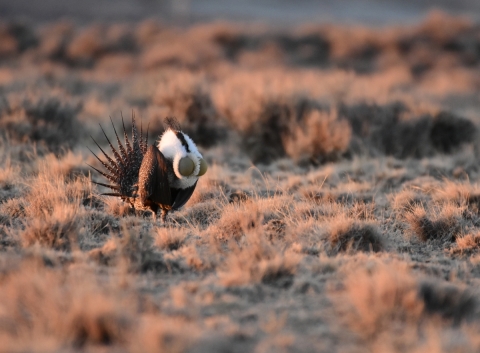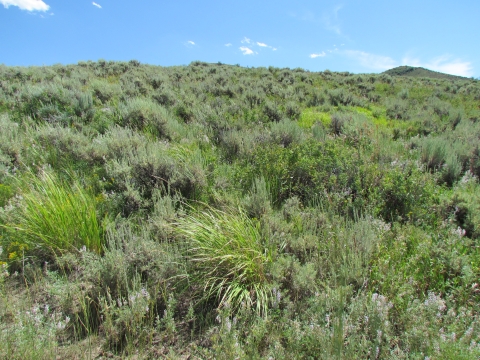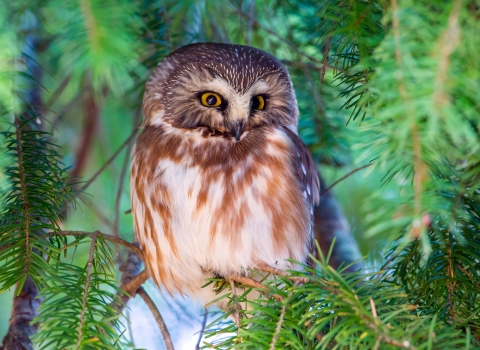Wild places untouched by artificial light are harder and harder to find. Hart Mountain National Antelope Refuge is a sanctuary for high desert wildlife and habitat – and the dark sky. Pronghorn antelope, California big horn sheep, and hundreds of other wildlife species rely on the protected habitat, including seasonal and yearlong water resources fed by snow melt and springs.Like the seasonal cycles that bring water to the 278,00-acre refuge, the daily cycles of light to dark and light again are essential to the health of the natural world and the absence of light is a key element of healthy habitat.
More than half of the wildlife on Earth are nocturnal – active at night instead of the daytime. For wildlife active during the daytime, the dark of night is essential for their life cycle needs. Sea turtle hatchlings find their way to sea following the light of the moon, migrating birds navigate by the stars, and without the night there would be no dawn to cue the Greater sage-grouse’s dance across their leks each morning during mating season. Even plants rely on the cycles of light and dark to cue their blooming and growing. During the day, the taproot of sagebrush sagebrush
The western United States’ sagebrush country encompasses over 175 million acres of public and private lands. The sagebrush landscape provides many benefits to our rural economies and communities, and it serves as crucial habitat for a diversity of wildlife, including the iconic greater sage-grouse and over 350 other species.
Learn more about sagebrush reaches deep into the soil, seeking and moving moisture up through the soil so its shallower roots can access the water during the night.
The U.S. Fish and Wildlife Service has partnered with many others in the community to establish and support the dark skies that help define this area of Southern Oregon, part of the largest, contiguous, pristine dark sky zones in the lower 48 states. The Oregon Outback International Dark Sky Sanctuary comprises 2.5 million acres across Lake County, including the refuge. For several years, partners in the Oregon Outback Dark Sky Network, a group of stakeholders including community members, Tribes, government agencies, landowners, non-profit organizations, businesses, and destination management organizations, have been working together to establish the sanctuary.
Dark Sky International designates Dark Sky Sanctuaries exceptional or distinguished quality of starry nights and a nocturnal environment that is protected for its scientific, natural, or educational value, its cultural heritage, and/or public enjoyment. The Oregon Outback sanctuary communities of Adel, Plush, and Summer Lake, the Hart Mountain National Antelope Refuge; a portion of the Fremont-Winema National Forest; nearly 1.7 million acres of land managed by the U.S. Bureau of Land Management; including several areas designated as Wilderness Study Areas and Areas of Critical Environmental Concern; the Oregon Department of Fish and Wildlife’s Summer Lake Wildlife Area; nearly 80,000 acres of state-owned rangeland; and a portion of the Oregon Outback Scenic Byway.
As the great American West is getting smaller, places for wildlife and plants that are undisturbed are increasingly rare. Protecting and restoring important habitat ensures a future for wildlife and people to enjoy this uniquely American landscape. Protected places like national wildlife refuges and are key for the future of the plants, wildlife and fish of the northern Great Basin.
One of the best ways to get to know the wildlife – and wild star skies in Southern Oregon – is to plan a visit to Hart Mountain. Enjoy sweeping views of the Warner Valley while passing deep canyons, camp near lush aspen groves, or relax in the hot springs near Warner Peak.






